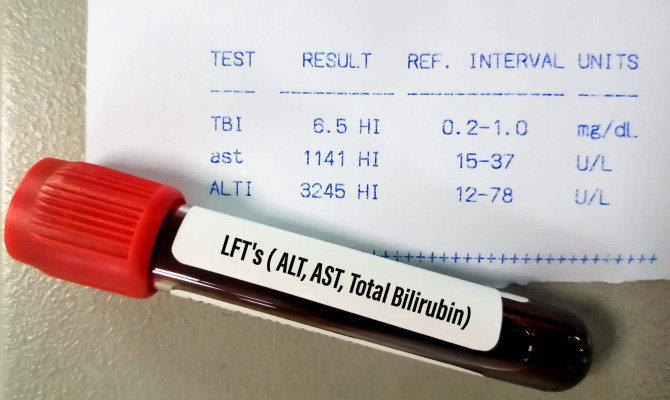Bladder Cancer – A General Overview

- Bladder Cancer
- 14 Aug 2023
Overview
What is Bladder cancer?
Bladder cancer refers to any cancer that develops in the cells of the urinary bladder. A muscular structure located in the lower part of the abdomen that holds urine is the urinary bladder. Bladder cancer develops when a few or more bladder lining cells transform and start proliferating to produce tumors. Bladder cancer is the most frequent kind of cancer of the urinary tract 1What is bladder cancer | Researched based study from Nlm.nih.gov and Urothelial carcinoma (UC) is the most typical kind of bladder cancer. If bladder cancer is left untreated, it may start spreading to the bladder walls, to adjacent lymph nodes, and eventually to the organs like the liver, lungs, bones, kidneys, etc.

Symptoms
What are the symptoms?
Individuals may experience different bladder cancer symptoms, which can include:
- Blood in the urine – the most frequent symptom.
- Increased frequency of urination.
- Weight loss that was not intended.
- Painful or burning urination.
- Being unable to urinate in later stages.
- One-sided lower back pain.
- Bone pain or soreness.
- A decrease in appetite.
- Feet that are swollen.
- Abdominal pain.
- Being exhausted.
Classification
What are the different types?
Different bladder cells have the potential to develop cancer and they may be of the following types:
- Urothelial carcinoma – originates in the inside lining of the bladder, ureters, and urethra, known as urothelial cells. But the bladder is where it occurs most frequently.
- Adenocarcinoma – a rare type that starts in the bladder’s mucus-secreting gland cells.
- Small cell carcinoma – also known as a neuroendocrine tumor, starts in nerve-like cells and they respond to signals from the nervous system by releasing hormones into the bloodstream. 2What are the different types | Researched based study from Nlm.nih.gov
- Squamous cell carcinoma – is connected to long-term urinary catheter use, or persistent bladder infection, and is more prevalent in regions where schistosomiasis, a particular parasitic infection, is a common reason for bladder infections.
The extent of the invasion will determine whether they are:
- Non-muscle-invasive – has not yet reached the bladder’s muscular wall. Most bladder tumors do not invade the muscles.
- Bladder cancer that is muscle invasive – has entered the bladder’s muscular wall or has progressed to surrounding structures.
Causes
Causes and Risk factors:
It is yet unknown what causes some bladder cells to change and develop into cancerous cells. The probability of getting bladder cancer, however, has been linked to a wide range of risk factors.
The following list could represent the most frequent risk factors:
- Smoking – When a person smokes or is exposed to secondhand smoke, these chemicals enter the blood, then they are filtered by the kidneys, and then gather in the urine, harming the DNA in the cells lining the bladder.
- Long-standing or frequent bladder infections – Untreated, recurrent, or long-standing urinary tract infections or bladder infections may be more likely to develop squamous cell carcinoma. Bladder cancer in developing nations often comes from schistosomiasis infection 3Causes and risk factors| Researched based study from Biomedcentral.com .
- Occupational exposure – People who work with chemicals used in the production of leather, dyes, textiles, rubber, and paint products. 4Causes and risk factors | Researched based study from Nlm.nih.gov
- In addition, there could be other risk factors like:
- Cancer in the family – Although bladder cancer rarely runs in families, having someone in the family who has the disease may make a person more at risk.
- Gender – affects more men than women.
- Age – The majority of bladder cancer cases are seen in patients over the age of 55, even though it can affect anyone.
- Chronic catheter use – may increase the risk of bladder cancer.
- Previously had bladder cancer – Those who have previously battled the disease are more inclined to develop it again.
- Radiation exposure – history of radiation therapy to the pelvis in the past.
- Chemotherapy – some cancer-fighting medications, including cyclophosphamide and ifosfamide.
- Drinking water treated with chlorine or being exposed to too much arsenic may raise the risk.
Prevention
What are the preventive measures ?
While there is no sure strategy to avoid bladder cancer, the following precautions can be taken to minimize one’s risk:
- To avoid exposure to cigarette smoke, quit smoking or, stay away from people when they are smoking.
- When handling chemicals, take all necessary safety procedures to prevent unintentional exposure.
- Eat a diet high in a range of fresh fruit and vegetable varieties, especially green leafy ones. They have abundant antioxidants and may help reduce the risk of cancer.
- Get medical treatment as soon as possible for any urinary tract infections.
- If you are at a higher risk due to a family history of cancer, long-term smoking, etc., get frequent check-ups done.
Diagnosis
Diagnosis of bladder cancer
The doctor may ask about the symptoms, personal history including habits of smoking, drinking alcohol, etc., and family medical history, followed by a series of tests including:
Urine tests
- Urine culture – to rule out urinary tract infections.
- Urine cytology – Under a microscope, medical professionals look for cancerous cells.
- Urine tumor marker test – to detect urinary tumor markers, which are compounds identified in urine that are either created by bladder cancer cells or produced by the body in reaction to bladder cancer.
Cystoscopy
- Aids in the detection and occasionally the treatment of illnesses like bladder cancer.
Biopsy
- This can be combined with a cystoscope, where a pathologist removes a sample of bladder tissue or cells to examine under a microscope for indications of cancerous changes.
- If the tumor is small, the entire tumor might be able to be removed.
Imaging tests
- Magnetic resonance imaging (MRI) test – a bladder is imaged in great detail, using an MRI.
- Computed tomography (CT) scan – to check for bladder cancer that has spread elsewhere.
- Ultrasound – to measure the size of any cancer, and to see if there is any spread to nearby tissues or organs.
- Chest X-ray – to determine its spread to the respiratory organs like lungs.
- Bone scan – to determine its spread into the bone.
Once bladder cancer has been identified, the doctor may need to stage it to determine the best course of action and expected results.
Stages
Stages of bladder cancer
Bladder cancer may be in its earliest stages when it is restricted to the bladder’s lining, or it may be invasive when it has already penetrated the wall of the bladder and may have spread to adjacent lymph nodes or organs. 5Stages of bladder cancer | Researched based study from Cancer.gov
Stage 0 and I are considered non-invasive
- Stage 0 – Cancer cells are discovered in the tissue lining the interior of the bladder, but the bladder wall has not yet been invaded.
- Stage I – It has penetrated the layer of connective tissue but has not yet gotten to the bladder’s muscle layers.
Stages II to IV are more invasive cancer
- In Stage II – The bladder’s muscular wall has been affected by cancer.
- In Stage III – It has reached reproductive organs and fat tissue on the outside of the bladder muscle. May show no spread to the lymph nodes, to one lymph node, or more than one lymph node in the pelvis.
- In Stage IV – Cancer has spread to the abdominal wall, lymph nodes, bone, liver, lungs, etc.
Complications
What are the complications?
Complications related to bladder cancer may include:
- General fatigue.
- Unexplained weight loss.
- Urinary tract infections.
- Spread of cancer to different distant organs.
- Chronic kidney failure due to urinary obstruction. 6what are the complications | Researched based study from Nlm.nih.gov
- Emotional disturbances – Anxiety, fear, depression, continuous feeling of hopelessness.
Treatment
Treatment strategies
Bladder cancer treatment methods may include:
Non surgical management
- Chemotherapy – Combinations of two or more medications may be administered into the bladder or a vein.
- Radiation therapy – Performed to eradicate cancer cells, frequently when surgery is neither possible nor desired.
- Immunotherapy – used to activate the body’s defenses against cancer cells.
- Targeted therapy – Drugs that are used in this therapy, concentrate on specific shortcomings in cancer cells to eradicate them. This therapy is performed when other therapies have failed.
Surgical management
Surgery techniques for bladder cancer may be as follows:
- A transurethral resection of bladder tumor (TURBT) – is used to identify bladder cancer and remove cancers that have not yet spread to the bladder’s muscle layers.
- Cystectomy – Carried out to remove the bladder entirely or partially based on the size of the tumor and its depth of penetration.
- Reconstructive surgery – After a cystectomy, having this treatment can give the body a new way to retain and eliminate urine. Intestinal tissue can be used to reconstruct the tubes or the bladder.
- Bladder preservation surgery – If a patient has muscle-invasive bladder cancer and does not want to have their bladder surgically removed, they may receive a treatment combining TURBT with chemotherapy and radiation therapy.
Surgical complications may include:
- Urinary leak.
- Urinary diversion.
- Pouch stones.
- Erectile dysfunction.
- Vaginal narrowing.
- Urinary tract infections. (UTI)
- Recurrence of bladder cancer.
Prognosis
Prognosis of bladder cancer
The type and stage of cancer, its extent of spreading, its severity, the patient’s age, and overall health, among other things, affect the prognosis. Around six hundred thousand people worldwide receive a bladder cancer diagnosis each year, while more than two hundred thousand individuals pass away from the condition. 7 Prognosis | Researched based study from Iarc.who.int Early detection and treatment of bladder cancer, like many other types of cancer, increases the likelihood of survival. 75% of bladder cancers recur even after early detection and successful treatment. Because of this, patients with bladder cancer may need to have follow-up tests for years after treatment to check for bladder cancer recurrence.
Any feedback on this article?
 This Articles content was accurate
This Articles content was accurate Very Informative Article
Very Informative Article I have a question or a comment
I have a question or a comment
 This article contains inaccurate content
This article contains inaccurate content This article was not helpful
This article was not helpful I have a question or a comment
I have a question or a comment
We appreciate your helpful feedback!
Checkout our social pages
References
-
National Library of Medicine
Bladder Cancer | Overview
-
National Library of Medicine
A rare bladder cancer - small cell carcinoma: review and update | Types
-
Tropical Diseases, Travel Medicine and Vaccines Journal
Urinary bladder Schistosoma haematobium-related squamous cell carcinoma: a report of two fatal cases and literature review | Causes | Risk
-
National Library of Medicine
Occupational risk factors for male bladder cancer: results from a population based case cohort study in the Netherlands
-
National Cancer Institute
Bladder Cancer Stages | Diagnosis | Stages
-
National Library of Medicine
Chronic Renal Failure | Complications
-
International Agency for Research on Cancer
Bladder cancer | Prognosis






































